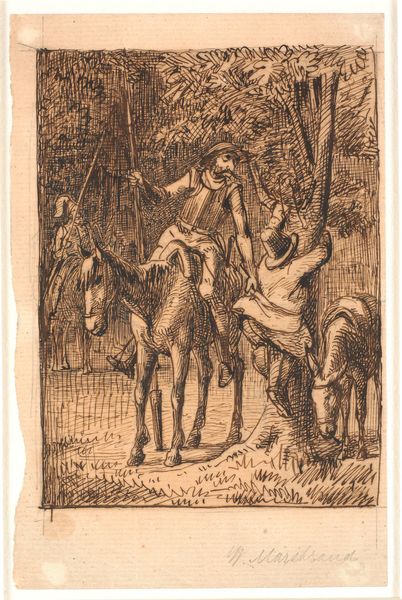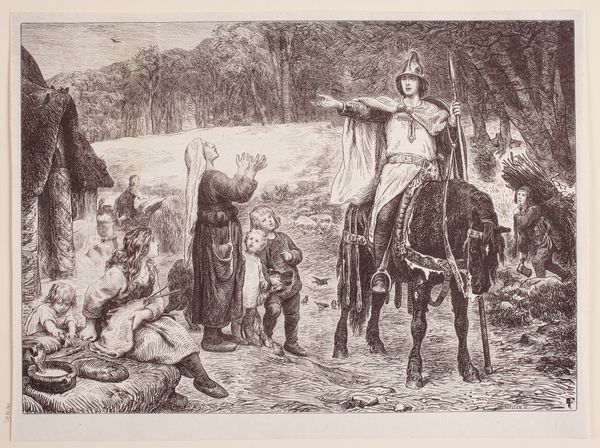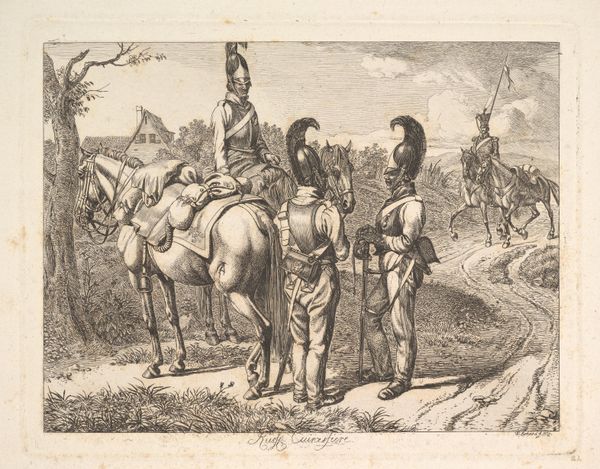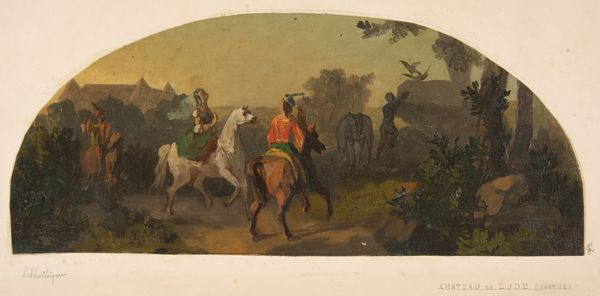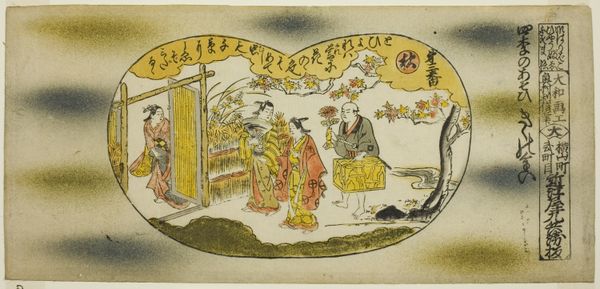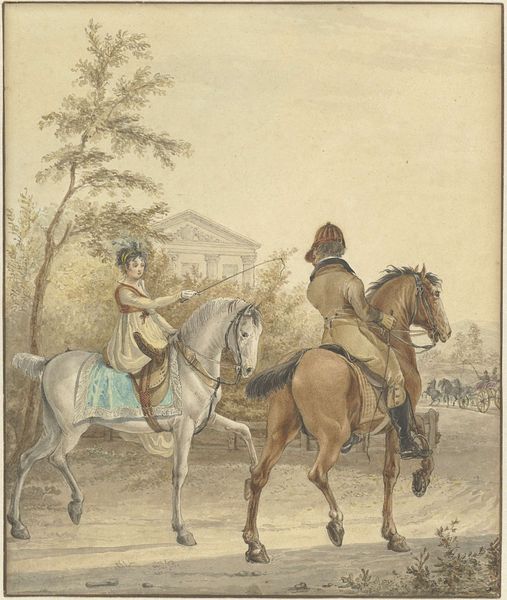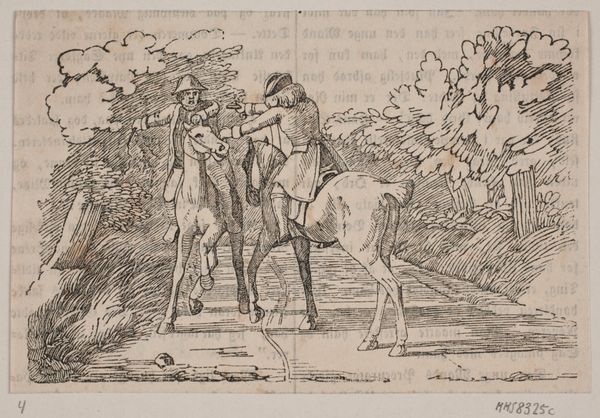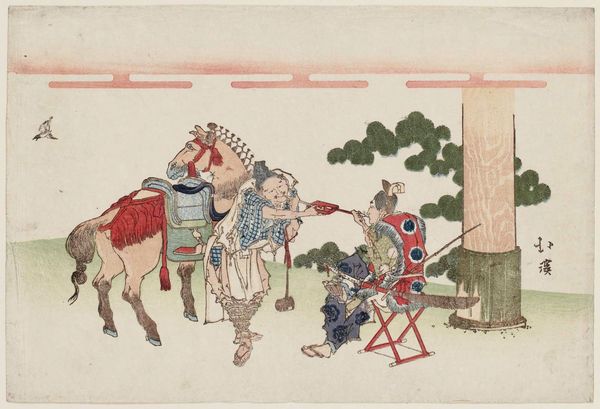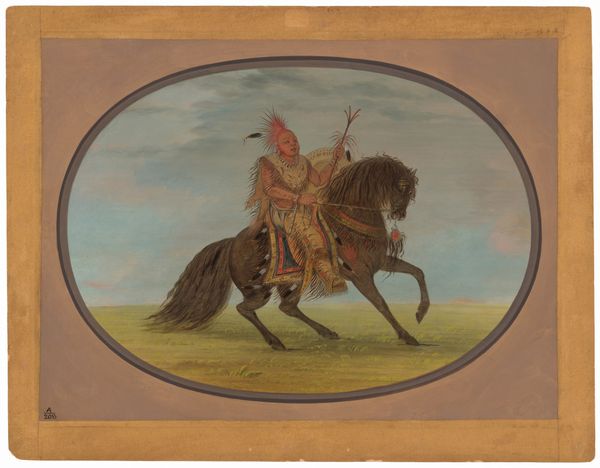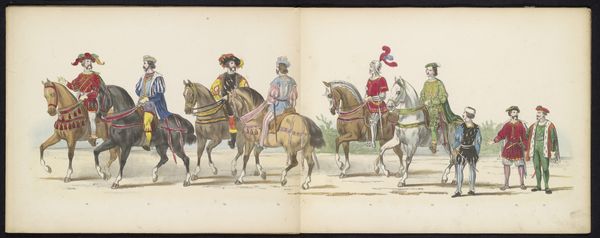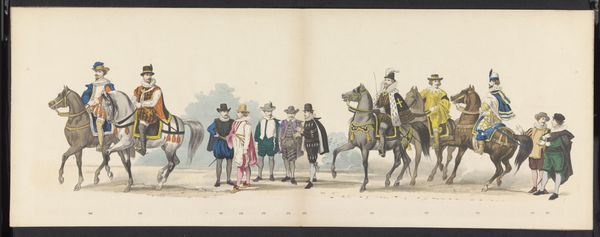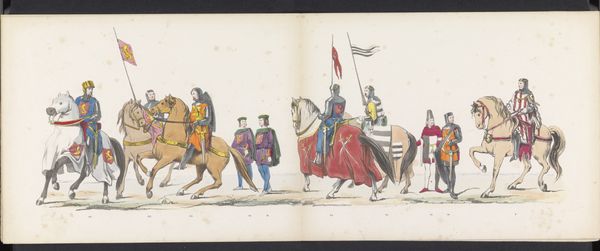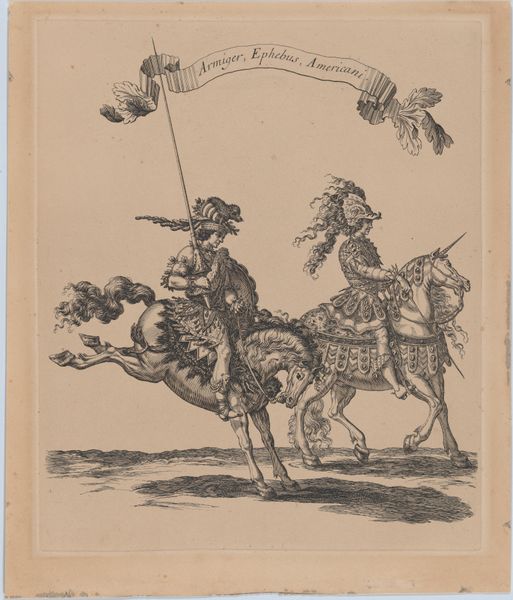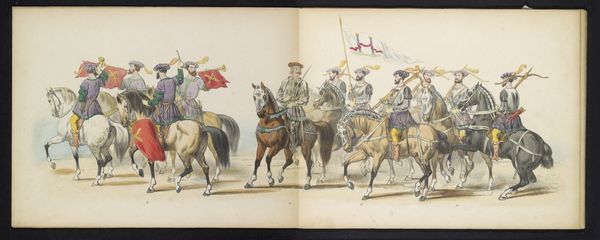
View of Kusunoki's Farewell at Sakurai Station c. late 19th century
0:00
0:00
woodblock-print, print, ink, woodblock-print
#
portrait
#
gouache
#
woodblock-print
#
narrative-art
# print
#
landscape
#
ukiyo-e
#
japan
#
ink
#
coloured pencil
#
woodblock-print
Dimensions: 11 5/8 x 16 15/16 in. (29.5 x 43 cm) (sheet)
Copyright: Public Domain
Kobayashi Kiyochika created this woodblock print, "View of Kusunoki's Farewell at Sakurai Station," in the late 19th century, now residing at the Minneapolis Institute of Art. The composition centres on a poignant farewell scene rendered with meticulous detail. The subdued yet vibrant palette evokes a sense of solemnity. Kiyochika masterfully employs traditional ukiyo-e techniques while subtly incorporating Western pictorial methods. The interplay between light and shadow, along with the linear perspective, reflects Kiyochika’s synthesis of Eastern and Western aesthetics. The samurai’s stance, balanced between resolve and regret, underscores the complex emotional undercurrent. The layered textures of the woodblock printing, evident in the armour and surrounding foliage, enrich the visual experience. Notice the foreground’s clarity gradually dissolving into the background’s soft focus. This intentional blurring not only enhances the depth but also suggests the ephemeral nature of the moment. Kiyochika’s subtle use of asymmetry and the strategic placement of figures draw us into a narrative that transcends the purely visual, inviting contemplation on duty, sacrifice, and legacy.
Comments
minneapolisinstituteofart almost 2 years ago
⋮
This is one of Kiyochika's most experimental and technically ambitious prints. Replicating the effects of copperplate engraving, Kiyochika rendered volume and shadow by means of crosshatching. The figures and background landscape also reflect the influence of Western naturalism. Nonetheless, the subject of the print is a famous one from Japanese history showing the 14th century warrior Kusunoki Masashige. When Kusunoki and his troops were outmaneuvered by the enemy forces, he realized he would soon die. Although his brave son wanted to stay by his father, Kusunoki instructed him to return home, so that he could survive to fight another day. This touching farewell between father and son was the subject of literature and theatrical performances. Kiyochika's rendering of the episode emphasizes the heroism of the warriors who gave their lives for the Emperor, an attitude that corresponded to Japan's rising nationalism in the late 19th century.
Join the conversation
Join millions of artists and users on Artera today and experience the ultimate creative platform.
